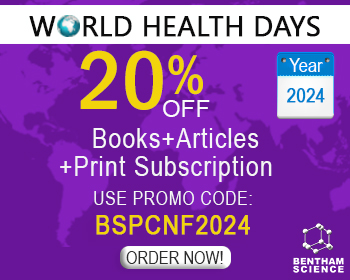Abstract
Background: Ethanol has been shown to increase oxidative stress, drug efflux transporter expression, and promote HIV progression. Macrophages, which express drug efflux transporters, serve as an essential sanctuary site for HIV. The antiretroviral drug lopinavir, a protease inhibitor, is a substrate of the drug efflux transporters P-glycoprotein and multidrug resistance-associated protein 1. The NF-κB signaling pathway is associated with inflammation and drug efflux transporter expression.
Objective: To examine the effects of ethanol on drug efflux transporters and HIV replication of macrophages and develop strategies to increase the efficacy of the protease inhibitor.
Methods: The expression of PGP and MRP1 was examined with western blot. The NF- κB inhibition was assessed with nuclear western blot. LC-MS/MS and p24 ELISA were used to assess intracellular LPV and viral replication.
Results: Ethanol at 40mM slightly increased drug efflux transporter PGP and MRP1 expression in activated macrophages. IKK-16, an NF- κB inhibitor, counteracted the increased transporter expression caused by ethanol exposure. MK571, an MRP1 inhibitor, and IKK-16 significantly increased intracellular LPV concentration with or without ethanol treatment. MK571 significantly increased LPV efficacy in suppressing viral replication with or without ethanol treatment. A decreasing trend and a significant decrease were observed with IKK-16+LPV treatment compared with LPV alone in the no ethanol treatment and ethanol treatment groups, respectively.
Conclusion: In activated macrophages, inhibiting drug efflux transporter MRP1 activity and reducing its expression may represent a promising approach to suppress viral replication by increasing intracellular antiretroviral concentrations. However, different strategies may be required for ethanolrelated vs. untreated groups.
Keywords: PGP, MRP1, ethanol, drug efflux transporter inhibition, NF-κB signaling inhibition, intracellular drug concentration, HIV viral replication.
[http://dx.doi.org/10.1080/14656566.2018.1515916] [PMID: 30234392]
[http://dx.doi.org/10.1016/S0140-6736(12)61038-1] [PMID: 22828485]
[http://dx.doi.org/10.1172/JCI67399] [PMID: 23979165]
[http://dx.doi.org/10.1186/1742-4690-10-161] [PMID: 24364896]
[http://dx.doi.org/10.1097/00002030-200211080-00010] [PMID: 12409739]
[http://dx.doi.org/10.1080/1355621031000069855] [PMID: 12745413]
[http://dx.doi.org/10.1097/01.ALC.0000122103.74491.78] [PMID: 15100608]
[http://dx.doi.org/10.1111/j.1525-1497.2001.00122.x] [PMID: 11251758]
[http://dx.doi.org/10.1046/j.1365-2567.2003.01584.x] [PMID: 12603597]
[PMID: 12086912]
[http://dx.doi.org/10.1111/j.1530-0277.2002.tb02621.x] [PMID: 12068261]
[http://dx.doi.org/10.1016/S0168-8278(97)80286-3] [PMID: 9252080]
[PMID: 8080593]
[http://dx.doi.org/10.1111/j.1530-0277.2010.01330.x] [PMID: 21039635]
[http://dx.doi.org/10.1001/jama.2016.8900] [PMID: 27404187]
[http://dx.doi.org/10.1590/S1413-86702011000100011] [PMID: 21412591]
[http://dx.doi.org/10.1089/aid.2008.0274] [PMID: 20455762]
[http://dx.doi.org/10.1002/bies.201200170] [PMID: 23613347]
[http://dx.doi.org/10.1126/science.278.5341.1295] [PMID: 9360927]
[http://dx.doi.org/10.1371/journal.ppat.1004955] [PMID: 26067822]
[http://dx.doi.org/10.1016/j.immuni.2012.08.010] [PMID: 22999944]
[http://dx.doi.org/10.1080/13550280600748946] [PMID: 16798676]
[http://dx.doi.org/10.1016/j.ajpath.2011.06.039] [PMID: 21871429]
[http://dx.doi.org/10.1128/JVI.01796-08] [PMID: 19153236]
[http://dx.doi.org/10.1097/QAI.0b013e3182898392] [PMID: 23392465]
[http://dx.doi.org/10.4049/jimmunol.1501194] [PMID: 26432896]
[http://dx.doi.org/10.1128/mBio.01659-19] [PMID: 31431552]
[http://dx.doi.org/10.1128/mBio.01186-17] [PMID: 28811349]
[http://dx.doi.org/10.1128/JVI.00065-19] [PMID: 31118264]
[http://dx.doi.org/10.1128/JVI.00290-16] [PMID: 27030272]
[http://dx.doi.org/10.1124/jpet.103.063966] [PMID: 14762102]
[http://dx.doi.org/10.1124/jpet.103.054304] [PMID: 12893836]
[PMID: 15456083]
[http://dx.doi.org/10.1007/s11095-016-1998-x] [PMID: 27431863]
[http://dx.doi.org/10.1177/2040206617745168] [PMID: 29343083]
[http://dx.doi.org/10.1097/00002030-199909100-00004] [PMID: 10509562]
[http://dx.doi.org/10.1038/12487] [PMID: 10470083]
[http://dx.doi.org/10.1097/00002030-200103090-00007] [PMID: 11242145]
[http://dx.doi.org/10.1177/009127002762491370] [PMID: 12412827]
[http://dx.doi.org/10.1002/jnr.21898] [PMID: 18855943]
[http://dx.doi.org/10.1016/j.bcp.2007.01.027] [PMID: 17328866]
[http://dx.doi.org/10.1089/aid.2007.0022] [PMID: 18729774]
[http://dx.doi.org/10.1111/j.1530-0277.2010.01259.x] [PMID: 20608904]
[http://dx.doi.org/10.1089/aid.2009.0211] [PMID: 20455765]
[http://dx.doi.org/10.1155/2012/751827] [PMID: 22496971]
[http://dx.doi.org/10.1111/j.1530-0277.2001.tb02418.x] [PMID: 11410742]
[http://dx.doi.org/10.1186/s12943-014-0274-0] [PMID: 25622857]
[PMID: 17956668]
[http://dx.doi.org/10.1128/MCB.24.17.7806-7819.2004] [PMID: 15314185]
[http://dx.doi.org/10.1146/annurev-physiol-021909-135846] [PMID: 20148674]
[PMID: 2471708]
[http://dx.doi.org/10.1126/science.282.5396.2085] [PMID: 9851930]
[http://dx.doi.org/10.1124/mol.109.059410] [PMID: 20051532]
[http://dx.doi.org/10.3892/ol.2016.5136] [PMID: 27895784]
[PMID: 29115482]
[http://dx.doi.org/10.1007/s12282-016-0738-8] [PMID: 27878697]
[http://dx.doi.org/10.1016/j.cellsig.2004.07.008] [PMID: 15567061]
[http://dx.doi.org/10.3346/jkms.2009.24.1.152] [PMID: 19270829]
[http://dx.doi.org/10.1016/S0140-6736(05)76156-0] [PMID: 10023903]
[http://dx.doi.org/10.1371/journal.ppat.1002314] [PMID: 22046128]
[http://dx.doi.org/10.1038/71569] [PMID: 10613828]
[http://dx.doi.org/10.1097/COH.0b013e32835fc68a] [PMID: 23454865]
[http://dx.doi.org/10.1128/AAC.00419-09] [PMID: 19667288]
[http://dx.doi.org/10.1038/nm.4319] [PMID: 28414330]
[http://dx.doi.org/10.1186/2052-8426-2-10] [PMID: 26056579]
[http://dx.doi.org/10.1371/journal.pone.0060334] [PMID: 23593196]
[http://dx.doi.org/10.1164/ajrccm.161.1.9905016] [PMID: 10619810]
[http://dx.doi.org/10.1073/pnas.86.7.2336] [PMID: 2494664]
[http://dx.doi.org/10.1155/2010/525180] [PMID: 20300455]
[PMID: 25897264]
[http://dx.doi.org/10.1177/00970002042006005] [PMID: 12043951]
[http://dx.doi.org/10.1371/journal.pone.0172628] [PMID: 28231276]
[http://dx.doi.org/10.3390/molecules24091718] [PMID: 31052607]
[http://dx.doi.org/10.3390/molecules23102548] [PMID: 30301217]
[http://dx.doi.org/10.3390/molecules22010148] [PMID: 28106751]




























